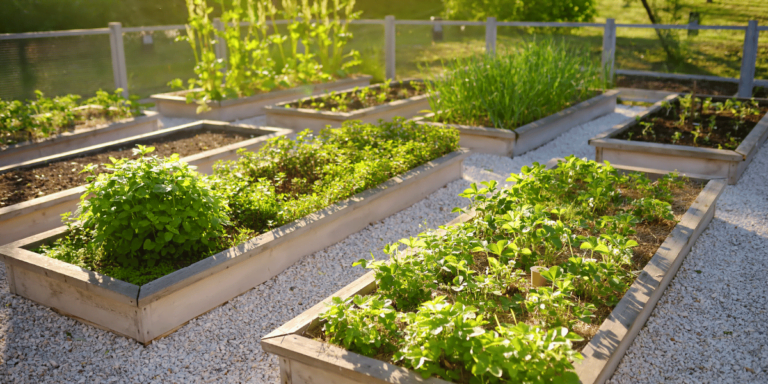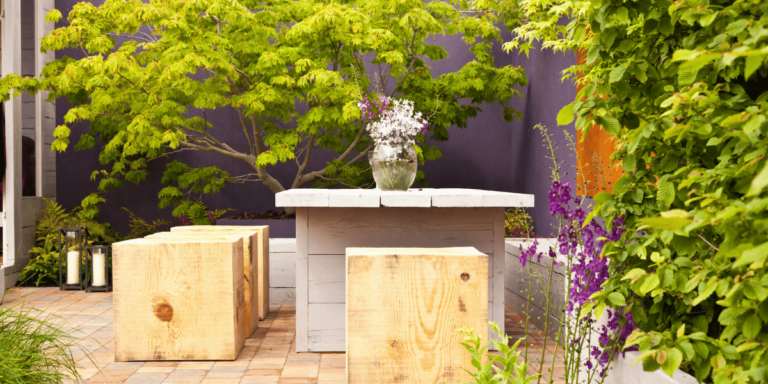Introduction
Indoor plants have always been revered for their ability to uplift a space, and the Alocasia (Elephant Ear) is no exception. This stately, elegant plant, with its large, heart-shaped leaves, has become a favorite among indoor plant enthusiasts for its visual appeal and relatively straightforward care. This review will delve deep into the comprehensive care and insights needed to help your Alocasia thrive. If you’ve ever wondered about the ideal light conditions, soil preferences, or how to propagate this plant, you’re in for a treat.
The details of the Alocasia (Elephant Ear) indoor plant.
| Specification | Details |
|---|---|
| Common Names | Elephant Ear, African Mask Plant, Taro |
| Botanical Name | Alocasia spp. |
| Family | Araceae |
| Plant Type | Perennial |
| Mature Size | Varies by species, but typically ranges from 2 to 15 feet in height, with leaves spanning up to several feet in length depending on variety and growing conditions. |
| Sun Exposure | Bright, indirect light. Some varieties can tolerate medium light. |
| Soil Type | Well-draining potting mix, often mixed with perlite or sand for added drainage. |
| Soil pH | Slightly acidic to neutral; usually between 5.5 and 7.0. |
| Bloom Time | Summer (although blooms are not always guaranteed indoors). |
| Flower Color | Varies by species, but typically a creamy white spathe and spadix. |
| Hardiness Zones | 9-11 (depends on species; some might be hardy in Zone 8 with protection). However, in colder zones, it’s mainly grown as a houseplant or lifted in the winter. |
| Native Area | Tropical and subtropical regions of Asia and Eastern Australia. |
| Benefit | Adds a tropical feel to interiors, improves indoor air quality by filtering certain pollutants, acts as a statement piece due to its unique and bold foliage. |
This table provides a concise yet comprehensive overview of the Alocasia plant. By understanding these key details, you’ll be better equipped to provide optimal care for your indoor gem.
Plant Care
To truly understand and care for the Alocasia, it’s essential to grasp its native habitat and natural growth patterns. Native to the tropical and subtropical regions of Asia and Eastern Australia, this plant is accustomed to warm, humid conditions. While it is resilient, the Alocasia thrives best when its natural habitat is mimicked indoors. Let’s begin our deep dive.
Light Requirements
Sunlight is fundamental to the well-being of the Alocasia. Aim for bright, indirect light. Direct sunlight, especially during the scorching afternoon hours, can burn the leaves, leaving unsightly marks. East or north-facing windows are often ideal. If you notice the leaves turning yellow, it might be a sign of too much direct sunlight. On the contrary, if the plant becomes leggy or the leaves lose their vibrancy, it may be craving more light.
Soil Preferences
When it comes to soil, drainage is the keyword. Alocasia prefers a well-draining potting mix, which prevents root rot. A blend of potting soil, perlite, and orchid bark often works wonders. Remember, this plant despises sitting in water, so ensuring the right soil mix is crucial for its well-being.
Watering Guidelines
The Alocasia enjoys consistent moisture but despises waterlogged conditions. During its growing season (spring and summer), keep the soil moist but not drenched. Reduce watering frequency during the dormant months of fall and winter. If you’re in doubt, a good rule of thumb is to let the top inch of soil dry out between waterings.
Temperature and Humidity Insights
Warmth and humidity are the Alocasia’s best friends. Maintaining a temperature between 65-75°F (18-24°C) will keep it happy. While it can tolerate a bit lower, sudden cold drafts or temperatures below 50°F (10°C) can harm it. To mimic its tropical origin, maintain high humidity levels. Regular misting, placing it on a humidity tray, or using a humidifier can be beneficial.
Fertilizer Recommendations
To support its robust growth, feed your Alocasia with a balanced liquid fertilizer every 2-4 weeks during the growing season. Opt for a diluted solution to prevent fertilizer burn. Come fall and winter, reduce or halt fertilization as the plant enters dormancy.
Pruning Tips
Pruning is more about aesthetics and plant health than shaping for the Alocasia. Remove yellowed or drooping leaves to encourage new growth. Use sharp, sterilized scissors or shears to ensure a clean cut without damaging the plant.
Overwintering Your Alocasia
As a tropical plant, the Alocasia doesn’t appreciate cold. If you live in a region with cold winters, ensure the plant remains indoors in a warm spot. Reduce watering and allow the plant to rest. Don’t be alarmed if it sheds some leaves; this is its way of conserving energy during dormancy.
Propagating Your Plant
Feeling adventurous? Alocasia can be propagated from offsets or bulbs. Carefully separate the baby plants or bulbs from the parent, ensuring they have roots attached. Plant them in a suitable potting mix, maintaining high humidity until they establish.
Types of Alocasia Plants
Alocasia, commonly known as Elephant Ear, comprises a wide variety of species, each with its distinct characteristics. Here are some popular types:
- Alocasia macrorrhizos: Known for its large, upright leaves, often found in landscapes.
- Alocasia Polly: Characterized by dark, arrow-shaped leaves and bright white veins.
- Alocasia zebrina: Named for its zebra-striped stems, contrasting with narrow, arrow-shaped leaves.
- Alocasia Cuprea: Recognized by its copper-colored leaves with a metallic sheen.
- Alocasia Black Velvet: As the name suggests, this variety boasts velvety, dark leaves that feel soft to the touch.
Each type brings its charm to the table, allowing enthusiasts to choose according to their aesthetic preferences and care capacity.
Common Pests & Plant Diseases and Solutions
Like all plants, Alocasia can be prone to certain pests and diseases. Recognizing and addressing them early is key to a thriving plant.
1,Pests:
- Spider Mites: Tiny arachnids that suck plant juices, leading to pale dots on leaves. Solution: Wipe leaves with neem oil or insecticidal soap.
- Aphids: Small, green insects that suck sap and excrete honeydew. Solution: Spray with a water jet or use insecticidal soaps.
- Mealybugs: White, cottony bugs that drain sap. Solution: Remove with alcohol-dipped cotton swabs.
2,Diseases:
- Root Rot: Caused by overwatering and poor drainage. Solution: Reduce watering, improve drainage, and repot if necessary.
- Leaf Spot: Brown or black spots with yellow halos. Often due to fungal or bacterial issues. Solution: Ensure good airflow, avoid overhead watering, and use fungicides if needed.
Encouraging Your Alocasia to Bloom
While Alocasia is primarily grown for its dramatic foliage, it can bloom under the right conditions. Here’s how to encourage it:
- Provide Proper Light: Ensure the plant receives adequate bright, indirect light.
- Maintain Humidity: High humidity levels can induce flowering. Consider using a humidifier or misting.
- Feed Regularly: Use a balanced, diluted fertilizer during the growing season.
- Avoid Stress: Stressors like drastic temperature fluctuations can hinder blooming.
Remember, while blooms are a treat, they’re not the primary appeal of Alocasia. Its stunning leaves are its true claim to fame.
Addressing Common Problems with Alocasia
Despite our best efforts, Alocasia can sometimes act up. Here are some common problems and their solutions:
- Yellowing Leaves: Often due to overwatering. Ensure the top inch of soil dries out between watering sessions.
- Droopy Leaves: Could be a sign of both underwatering and overwatering. Check the soil moisture level to diagnose.
- Brown Leaf Tips: Typically indicates low humidity. Increase humidity via misting, trays, or humidifiers.
- Leggy Growth: Suggests insufficient light. Move the plant to a brighter location.
By addressing these common issues promptly, you ensure that your Alocasia remains in its best shape, continuing to grace your space with its presence.
Now, with this comprehensive care guide, you’re equipped with the knowledge to nurture and appreciate your Alocasia plant in all its glory. Remember, plants communicate; it’s up to us to understand their language and respond accordingly.
Responding to a Quickly Declining Plant
If your Alocasia shows signs of rapid decline, don’t panic. Check for root rot, which often results from overwatering. If the roots are brown and mushy, trim them, let the plant dry out, and repot in fresh soil. Ensure proper light, humidity, and water conditions. Sometimes, a little love and care can work wonders.
Flourishing Finish
There’s no denying the Alocasia is a gem of a plant. Its unique appearance combined with its modest care needs makes it a stellar choice for any indoor plant enthusiast. By understanding its native conditions and mimicking them as closely as possible, you’re well on your way to nurturing a healthy, thriving Alocasia. Embrace the journey of plant parenting and watch your Elephant Ear flourish.
Frequently Asked Questions
Decode the magic of gardens with our guide to Landscaping Styles Frequently Asked Questions.
- Typically, every 2-3 years or when you notice the roots outgrowing the pot
- This could be due to low humidity or over-fertilization. Ensure adequate humidity and follow recommended fertilizer guidelines.
- Yes, but only in warm climates and with protection from direct afternoon sunlight.
- Yes, Alocasia contains calcium oxalate crystals, which can be toxic when ingested. Keep it out of reach of pets and children.

















